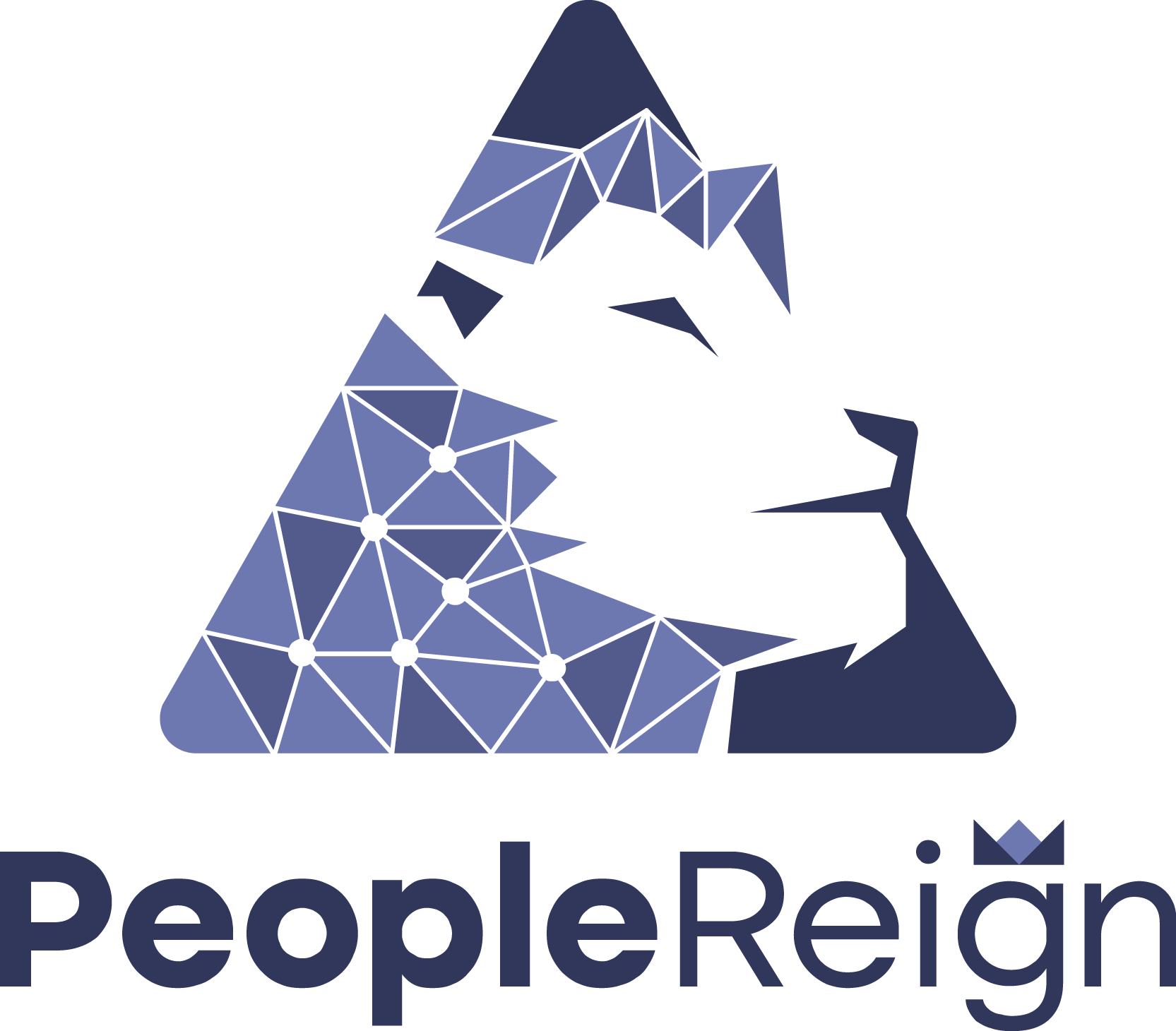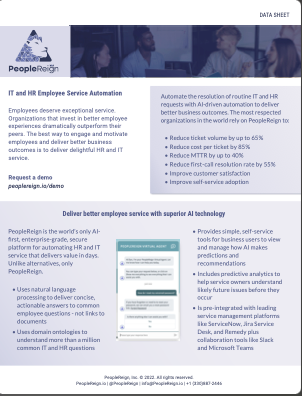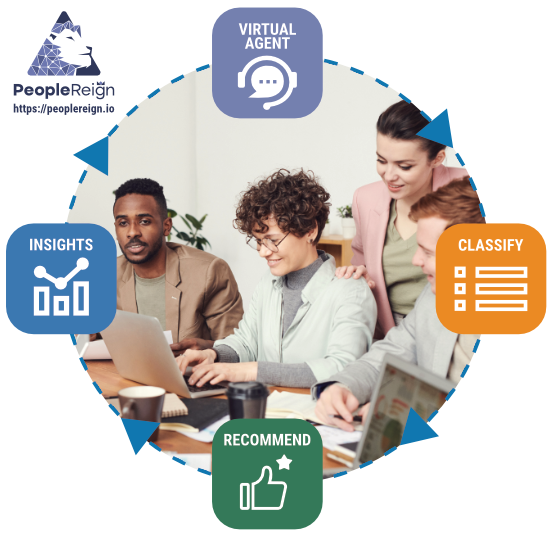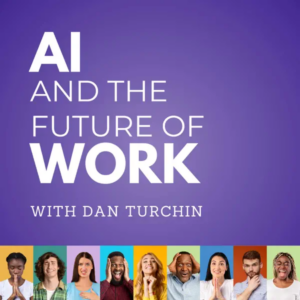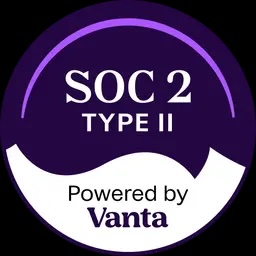This is a transcript from the AI and the Future of Work podcast episode featuring Dan Turchin interviewing Dr. Mamoun Samaha, serial CTO, security expert, and professor
Dan Turchin (00:14):
Good morning, good afternoon, or good evening, depending on where you’re listening. Welcome back to An the future of work. Thanks again for making this one of the most downloaded podcasts about the future of work. If you enjoy what we do, please like comment and share in your favorite podcast app, and we’ll keep bringing you great conversations. I’m your host, Dan urchin advisor insight finder, the system of intelligence for it, operations and CEO of people rein the AI platform for it and HR employee service. It’s often lonely being CTO. best days are when everything works and nobody notices. And well the worst days are when there’s a breach and your name ends up in the headlines in between the board expects you to drive the innovation agenda. And by the way, the budgets always seem to be getting cut in half and you can never hire people fast enough.
Dan Turchin (01:10):
Well, today’s guest is both a serial CTO and a professor of computer science at Northeastern university. Having been a technology leader in the past at companies like HP and Motorola mobility, which was acquired by Google, Dr. Soma’s research interests lie in the intersection between mobility, cybersecurity and AI. He has a unique perspective on what’s going on in academia, combined with what’s happening in the real world. He has a global vantage point. Having lived in Jordan, worked in Dubai and trained in a combination of Silicon valley and the Netherlands really been looking forward to this one without further ado. It’s my pleasure to welcome Dr. Samma to the podcast, Dr. Samaha, why don’t you get started by sharing a little bit more about your background and how you got into the space?
Dr. Mamoun Samaha (02:00):
Thank you so much, Dan. My latest position is in it, I’m the CTO in that university as well. And I started my career working in Dubai as a network engineer and got trained by Oracle and worked in the ministry of education. Then I went to the Netherlands, did a lot of research and I ho university. And when I came to the us, I started by working on networking and I grew up in in that role or career to be wireless and mobility CTO in in HP. What did, what it drives? My progress in my earlier was the customers. I became kind of like the go-to person, if they have a problem in the network, if, if they have you know, like anomalies in software, et cetera, it, it reached to the point where our sales people don’t wanna go to the meeting with the customer without somebody who’s solid.
Dr. Mamoun Samaha (03:05):
And it cuz you cannot sell if you don’t show your own it. So did a lot of progress with the great mentors, like you know, Phil McKinney and others. So learned all lot I reached to where I am got recruited to work with Motorola mainly on security and mobile device management their investments and worked on couple of acquisition huge platform for managing forms with China, mobile and I as a chief architect there. And after Google Bola, I decided to go do, do my PhD in i.edu the com the university. after this got appointed as the head of the computer science and the CTO and run and the CIO jobs as well.
Dan Turchin (04:01):
You mentioned you were mentored by Phil McKinney, for those of you who don’t know the legendary CTO, former CTO of HP. Talk to us about what you learned from Phil McKinney.
Dr. Mamoun Samaha (04:13):
You know what observed Phil McKinney and he gave me a lot of to to research in the white. I learned the white space area. If you see people going on a straight line in innovation, always look where they are not looking. So so learned that concept from him, the concept start applying it for mobile and security. And even I teach to my students always look, don’t follow the trend because the trend normally is a straight line, bigger screen, bigger screen mobility, wherever you see it, you wanna go away from, from that into the wide space. And that these are the opportunities. And I focus a lot on that in added. I learned from him customers briefings. He trust, he trusts you if he send you to a big, big, big deal. I’m talking about like not million billion deal. He doesn’t question that the way he trusts you is it gives you a lot of you know, a lot of confidence. So he’s, he’s amazing for me. So I learned a lot I learned how to trust people, not micromanage them. So this was a big learning for me and yeah, that that’s about it and innovation how to deal with corporate antibodies in his killer innovation book. So a lot of things I cannot count
Dan Turchin (05:49):
There aren’t many people who can successfully migrate from industry to academia back the other way around. What has been the, to your success, doing both
Dr. Mamoun Samaha (06:00):
Well. I love, I love education. Duba was writing books at the syllabus for almost most schools. I was doing I migrated a lot of school from you know, like from using legacy programming into windows program. I was teaching visual basic for kids from grade six and go and above. I was teaching little kids kindergarten and others from the series. I was trying to do a lot in education. I enjoy education. And when the opportunity came you know, to do my PhD after Google acquired Motorola, I said you know, it’s time for me to just go and study. And I felt I’m behind in AI. And I said, I wanna restart. So I start working on organic technology and PhD research there. And continue to teach at the same time. Teaching is, you know, something I can do forever. You know, I love teaching. So because actually you learn from students when you teach something the best way to learn something is to teach it. That’s what, it’s,
Dan Turchin (07:19):
What makes the job a, the CTO so hard.
Dr. Mamoun Samaha (07:25):
Yeah. You know, change is difficult in in, in any organization. And when you try to go kind of like, I work with big, big corporates when I went to Motorola, it was a piece of cake it’s only 30,000 increase, but when you have 200, hundred or 300,000 employees and different divisions and contradictory strategies, it’s a ship. And to steer the step is very, very difficult. So you, you run into a lot of bureaucracy, a lot of what field calls, antibodies, and you know, so politics is very, very difficult and change is difficult on some people who are in the leadership. That’s what makes it difficult. They don’t see, we need to turn right start now. So we are not behind and they wanna continue till they reach that point. And at that point, ship is, cannot be turning 90 degrees, you know, so it is the change and the mindset of people who don’t wannccept new technologies and that the world is changing. And the change is you know, like exponential, not linear anymore.
Dan Turchin (08:43):
So let’s say there’s a spectrum. And kind of on one side of the CTO’s role, you have a very tactical set of obligations. And then the other side, there’s a set of strategic obligations, maybe, you know informing the board about the direction of technology and being an innovator visionary what’s the right way to balance your time as a CTO. How, how do you know when you’re spending too much time being tactical, or maybe even potentially too much time being visionary?
Dr. Mamoun Samaha (09:10):
You know, you, you have to do the visionary while working. In my case, I work with nd in the education I work with other department chairs. We, we balance it your vision, you should you should implement it within the business. You cannot, can’t separate both. Honestly. I don’t spend, here’s 30%, he’s 60. don’t balance. I see it as one unit. And when I am working with the business people, I share the chunk, what I wanna do as a vision in small pieces try to implement it there and make, it looks like their idea. Cuz if you, if you are the visionary and you don’t know how to integrate your ideas into the other side, you will not succeed. It’s, it is it’s a delicate balance, but you have to do it jointly, you know, just chunk your ideas and vision share it with the leadership. If they support it, you start implementing it with the other side. You know,
Dan Turchin (10:18):
Now if you’re in sales you are measured by revenue. And if you’re the CFO you’re measured by, let’s say profitability or margins, how are you measured as CTO
Dr. Mamoun Samaha (10:30):
For, for me, it is , for me, it’s also right now, right now at this time, it’s also reduce of you know, like faster, the product to market. The more customer satisfaction I consider myself successful. Always I focus on the customer. I some sometimes in some occasions I had to tell the customer, don’t go for this product, which is against my salespeople. I’ve done it for Blackberry. I said to big deals do not do Blackberry. I know my salespeople wanted the people, , those big companies and 10 years ago, they don’t know what’s gonna happen into Blackberry. had to give them my honest opinion and I get measured by customer satisfaction. When a customer come to fill and tell him, I need Mamon to work with my it in my corporation for one week, you know, I feel satisfied be that the customer is happy and will continue working with us.
Dr. Mamoun Samaha (11:41):
I’m not driven by the sales people. I’m driven with the right technology, the right solution for the customer. And as long as my management and the customer is happy, the management happy, I will be happy. So I’m, I’m, I think I always been measured by customer satisfaction in the education I’m measured by you know, like how much my students get jobs. When I see a student landing a job let’s say 180 hundred 40. I feel very, very proud that I did the right thing for the university. Also reducing the expenses. Many corporations are stuck with all technology, moving them from having their own data center to the cloud. That by itself is very, very challenging. It need somebody who understand architecture very, very well. So I’m also being majored on choices I make in technology and how much I have reduced cost in the, in the corporation. So always I try, ‘m not looking at 10, 20% in moving, I’m talking about 50 to 90% change. You know, I focus on the big things and the big numbers and how we can do, and these are so noticeable by the port and the management. So ‘m, I’m satisfied as long I achieve a big you know, big accomplishment and reduced cost. And my customers are very, very satisfied. They don’t come and I sell them something legacy because I have it.
Dan Turchin (13:17):
So you’re talking to a lot of entrepreneurs in the security space as a CTO, when you’re evaluating new products in today’s kind of threat landscape, what are the technologies that are most compelling when you think about how to, how to, you know, allocate your scarce budget?
Dr. Mamoun Samaha (13:37):
See what, what I do in normally in you know, sometimes solution might not be straight into the, into the products. I look at the architecture because probably in enterprise a lot of vulnerables come from the architecture side, the way, for example, in many occasions, people wanna, I’m gonna talk history. Everybody love VPN. I’m always against the VPN in terms of web application. I wanna be on the cutting edge. I don’t want everybody to use the traditional two factors. So basically when it comes to budget, I have to look the most efficient solution. And you know, I you know, like, and look at the budget to innovate based on latest technologies. And you know, I’m, I’m not afraid of migration or changing the ship in this direction from now. So we start piloting, cutting edge to solution that the, that fits within the budget, because if we continue what we are doing probably it doesn’t have budgets.
Dr. Mamoun Samaha (14:49):
Most corporations don’t have budgets. Let’s talk about implementing Blackberry in everybody’s hand is it’s impossible. And some CIOs in a huge corporation told me our strategy is Blackberry, and it’s dying. We know that because they don’t know the trend, consumerization of it is a huge, and it’s succeeded in many, many areas. So one way to, you need to look at the cutting edge that fits within the budget and see if there is an opportunity that do a change that will even save budgets, save, go below budgets. don’t think I ever I ever worked on any project that exceeded the budgets because you need just to know what is around you and find the most optimal one area where the budget wasn’t enough is mobility in enterprise. And we know consumerization is gonna wipe it out. You have to insist on consumerization of wifi consideration of devices, just you have to implement some management.
Dr. Mamoun Samaha (15:58):
So this is normally but the budget you, you would you would put it mostly that it doesn’t impact the business. You, you don’t want to impact the operation. You want the people who do business are satisfied and you are and you prioritize the risk and good risk management for areas. So I would stay always on the business side, more than the it side, the it and the InfoSec guys, you know, they cannot do much. We want to do much achieve much and then improve in an extreme programming. We’re gonna do this risk first, this risk next. So you cannot address security in in one shot. So I’ll stay, I’ll prioritize it based on the business needs. even I’m willing to take risks. So the business succeed
Dan Turchin (16:51):
Best innovation tends to come from startups and yet f a CIO or a CTO it’s less risk to buy from an incumbent. Let’s say, you know, a Cisco, a Microsoft, a Symantec in a security space as a startup entrepreneur with potentially more innovative technology, how do you sell to a CTO or a CIO given that the incumbent is, is gonna be less risk?
Dr. Mamoun Samaha (17:21):
You know, if I wanna sell anything, I, first of all, I have to believe this is a moving forward strategy. You have to look to the future. It’s don’t, if, if this is where, you know, you have to know the, and sell it within the trend, and you have to know the innovation, what is coming up? What is next? So if you position it in that way, you are gonna be able to sell it. A huge companies cannot, as I said, huge ships cannot make a 90 degrees shift. You need to take a shortcut with a small company, so you meet them somewhere or be ahead of them. So would look at convince them with the trend, with the value proposition of this product. And the most important is , saving to go with that company has to be so significant. You know, like if, if, if you are all what you are saving on the, this small amount, they are not gonna pay attention. You have to articulate how much is the saving need to take the risk and you start piloting it show it. Don’t talk. You need to show
Dan Turchin (18:36):
As the CTO of it. Is there one particular security related problem that if you saw the right vendor pitch, the right technology, come in your door today, you’d buy it. What’s the problem. And what, what’s the solution that you’d, you’d be right. I, to write a check for,
Dr. Mamoun Samaha (18:55):
, I really like everything to be digital signatures, everything. So digital signature are very important, cuz I wanna improve the process. I want, I want something that’s done in a month or two months done in few minutes and I am all about automation. worked with north Northeast. I work with Sacramento state. I work with a few universities. It’s not E easy to change things and produce contracts using. But I would say the area I would focus on is digital signature make thi process much, much faster in terms of security. I would say all contracts should be digitally signed with the right authority the right tools. So I would say digital signature are we, we did sign with DocuSign and others, but it’s not only to invest in the technology.
Dr. Mamoun Samaha (19:54):
You have, have to implement this within the within any corporation, honestly, because people wanna be on mobile device, approve things and doesn’t have for spreadsheets and complicated things. So that’s number one. Number two is authentication, authentication. We, because of our strong it, my strong it team and it, I don’t need much about authentication. We teach this in the curriculum, how to do single signon, how to do a multifactor. This is a standard in our curriculum, but if I didn’t have those capabilities, I would write the check on authentic and multifactor authentication and single sign on these are critical. Those two pieces and in term of a lot of investments was done on firewalls and VPNs, et cetera. Once you migrate to the cloud start getting good out of the data center business, you end up saving a lot of money and at that level you want slick solutions for accessing your data. And you know, you might limit different edge of the network. For example, we need an edge of the network that is AI enabled. So there are a couple of companies I worked with I would buy their solution. If you can block the attack before it hits the university, we cannot enforce if student to have antivirus, blah, blah, blah, on their device, you cannot control the end user device. So anything on the edge of the network with powered by our A would go for that.
Dan Turchin (21:43):
What kindI would you expect to be performed at the at the client at the edge?
Dr. Mamoun Samaha (21:48):
Oh, you know, like mostly viruses you know, to malware anything they can catch on the edge of the network. I’m a believer on the of the seamless edge of the network, not as heavy as the VPN, but I wanna capture things with AI on the edge of network. There are a couple of solutions I worked with. I don’t wanna list names, but I’m expecting no viruses no matter where it, it, it, it needs to go beyond the firewall.
Dan Turchin (22:23):
What about when the edge device is wearable with very limited memory limited processing power?
Dr. Mamoun Samaha (22:30):
I’m talking about the edge, I mean, on, on the edge of the network for our solution between the server and the device, but you are talking about the device itself here, devices what’s very critical on the device is the authentication of course, authentication is very, very critical and the encryption on the device being whatever it I see the trend is gonna go first of all any the devices and all those devices are critical because of connectivity. if we follow connectivity between 3g, 4g 5g, even six G security is gonna the speed is increasing tremendously, if not exponentially. So I think those devices we need to reduce the amount of software on the on the device. We have a lot of devices we call it what do I wanna call it?
Dr. Mamoun Samaha (23:36):
Potentially UN unwanted applications. That’s, that’s that scares me a lot. This is one of my fears on, on those devices. You dunno, what’s on the device. Basically if I ask anybody in my class, I do this always in the beginning. How many people know how many apps running on their iPhone? They dunno. We, we dunno what is in our devices, because they can be, the OS can be altered. Devices can be out. We dunno those edge devices. You, you called it edge. That’s why I’m referring to it. But those devices, you need to take care of what OS they have and what are the plugins or the services, or the apps running on those. So, and when they communicate with the network, you have to manage more the network, you have to monitor the network , , and the, once your server got hit before that server got hit, you need to analyze the traffic in real time and using AI because a human cannot see those anomalies.
Dr. Mamoun Samaha (24:40):
What would also on those devices, I think R and D and where we need really to spend time is understanding the future. If you take any device and look at what is the killer app, when the speed goes into six, J what is the, what is that killer app browsing looking at Facebook or a movie, but you don’t need six G that now that six G might some, at one point you, we might be, we might be able to download to those devices three HD 30 HD movies in a, in, in like less than a minute, but the use case is very, very weak. I wouldn’t use high speed for, can I, when I design a device, can I move all the complicated software into the back end? So I think we have market is a flooded with unnecessary software and operating system on the devices.
Dr. Mamoun Samaha (25:45):
n the future, I don’t think those devices should be more than a sensor and a thin client. And actually to answer your question, there shouldn’t be any risk other than authentication, because everything should run on the back end. There is no need to bring it to the device, process it, and push, push it back to, to the network. Again, it, it is like a waste of bandwidth and waste of time. So I think, I think the architecture of devices today is gonna change in a big, big, big way. So I think we are now I call this over engineering. We are over engineering, what we have today, and the market is flooded with devices. If I ask anybody how many ISIS you have, actually, he cannot count them in the last 10 years. Your garage is full of devices. So that’s a waste of resources, waste of everything, waste of data. So think everything is gonna be re architectured to minimize the risk and above all that it’s gonna make cost of the device. 1% of where it is today,
Dan Turchin (26:55):
We recently had John Whaley who’s the CEO of a company was acquired actually, but called unify ID, talking about a passwordless future and talking about biometric authentication and even more complicated combinations of factors to be able to authenticate advice or sorry, a user without a password. Is that is that post password, future, or gonna be a reality in the next decade?
Dr. Mamoun Samaha (27:27):
Honestly, , didn’t look at his articles or that idea. I am big. I am big on what do we call it? Buff technology physically under clonable functions. There is company called intrinsic ID. Every, almost every device have memory. And the memory is a, is a, is a, when it’s manufactured, the memory becomes like a fingerprint for the device. We are not utilizing that solution as a password. I think intrinsic is on the right of authentication because every device is unique. You need to have some aspects from the user, some aspects from the device, and the way with multi multifactor is good. But bio, you know, bio is, is, is reasonable, but it’s not accurate. Today when we when we try to do face authentication, when it fails, it’s prompt you for your pin code.
Dr. Mamoun Samaha (28:38):
You are as strong as your weakest link. So basically it’s a pin code. way we are implementing it is just more, you know, it’s for con convenience. So I think the future is gonna be totally different. It should be a location based it should be behavior. It should be a combination of many, many parameters. And again, I don’t expect the device. I don’t take the device to, to be merely more complicated than a piece of glass and some transmits and sensors. There is nothing on the device. There shouldn’t be any storage on the device in, in my opinion, hence the authentication become critical. So I think if the sensors have some memory, you, every device also the best we used to add memory remove right now, the device is sealed. So if you take the aspects of the hardware, it can be a very, very authentication.
Dr. Mamoun Samaha (29:40):
One of factors, the pin code is another one or the password. I don’t think these days I think we are doing well. These days people start to accept sending them a second factor, authentication vias. I’m glad after 10 years, they start to accept this banks are doing even some probably didn’t do it, but so I’m I think the you know UNC the both technology physically, unclonable utilizing the differences between devices. It’s impossible to reproduce two devices. dentical, so I can use that and then use a password. here we go, you know, think there are many things, but authentication is very, very critical and making it one authentication method like, sorry, a single sign on is also very, very critical.
Dan Turchin (30:47):
The topic that comes up often on this show is the future of jobs in an era of machine learning and AI. And you had mentioned the importance of automation in the context of potential using AI to detect anomalous traffic patterns in a network. But let me flip that on its head. So when you’re advising your students about skills that they can be investing in now that will be future proof. What are the things that will never be good candidates for automation?
Dr. Mamoun Samaha (31:20):
Oh, that’s a difficult question. I honestly I like my son to be like me. I have 18 and 20. I like them to be like me in the tech area, but my daughter, when she make her choice to be a nurse I don’t think AI will take her place in any way of shape. My son also wanna do brain cycle or, and other things, and I didn’t feel I felt they did the right decision by themselves and they don’t need to be programmers at, at the moment because programs might be generated by AI, a lot of things, but it’s all, all depends on how long we are looking to. If I’m talking to student today, I made sure in every division in my department, all my students know AI and understand security and AI, they need to understand it.
Dr. Mamoun Samaha (32:18):
And I believe security, AI and 3i, 3d game design, like using unity. These things should be not only taught in our, we did teach it since probably seven, eight years. It should be taught in high schools, honestly, cause I feel every instructor in high school teaches kids, oh, I saw this from MIT coming, how to use Java, like, like a logo logo and doing this. And in my experience in Duba, I could get grade five to write a visual basic application. So doing the unity app and combining the physics and the metaverse and under standing 3d are piece of cake compared to where we were even last five years ago. So I think I would advise my students 3d, understand unity it work on any platform. Understand maybe for now, if you wanna work on a lab or something we don’t use MetLab we, we use Python.
Dr. Mamoun Samaha (33:20):
So I, we offer courses in, in Python. We want everybody to know what’s AI and machine learning. And when he design anything, even if you are a marketing person, you need to know what’s AI capabilities. So don’t, I don’t think, I don’t think As to take everything. It’s gonna create millions of new jobs. We need to, to make sure our students are really educated in this in marketing, they don’t need to know datnalytics, they need to know everything. So I think everybody, and at any stage of his life, he need to understand it so he can utilize it rather than, and to feel, oh, I’m scared of this. As not gonna replace everything and in your job might be based on that. And in that area, you know,
Dan Turchin (34:11):
Said it before on this show, but I firmly believe what can be predicted is better left to machines, but what requires empathy or rational judgment is better left to humans?
Dr. Mamoun Samaha (34:22):
Absolutely. Absolutely. think that’s that’s very correct. Thank you.
Dan Turchin (34:28):
Now we’re better at time, but I’m not gonna let you go without answering one last question for me. So Polish your crystal ball here, Dr. Samahnd tell me in 10 years, what’s one thing that will be commonplace at work that today might just seem like science fiction.
Dr. Mamoun Samaha (34:45):
And this is my dream. Actually, I’ve been talking about seven years. I’m, I’m hoping every device in enterprise and at home disappear and it becomes a piece of glass. There is a video from Corning. I used to work with Corning R they did, I think they did a day of class. It it’s on YouTube and an it, I work with Phil on the always connected. I think we need to utilize the new channels, like, you know, the fiber optics are giving us a huge bandwidth. I think Phil and his labs produced it some thing around 10 gigabit per second or something. I hope to see every device and every desk have a piece of glass rather than a laptop or a PC. So I’m predicting I’m, I’m predicting there will be no iPhone, no laptops, nothing.
Dr. Mamoun Samaha (35:47):
It’s a piece of a glass and you just withdraw the size of it. And everything runs on the backend on the cloud because I don’t need to run iOS or Android or Linux. Everything can, it’s my choice. I could run any of those if I like. So if the industry work together towards that, which is very difficult I think I like to see the enterprise support free because today everything, everything happens in our it fault. Their video is not working. This is not working. So ‘d love to see enterprise pushing everything to the cloud. And the devices become dumb devices like back to the future. It is like the terminals day, but it is wireless. And if a device broke, I was working with the host in Colorado. They’re they have cabinets full of tablets, broken tablets, broken, blah, blah, blah.
Dr. Mamoun Samaha (36:45):
They cannot throw it. You know, you cannot throw anything in the garbage because it has the user’s datnd HIPAnd blah. So I’m hoping not to see those glasses. I wanna see when something broke, you just put it trash. It, it doesn’t have any data. And it’s so cheap. I want the iPhone to go from thousand dollars to nothing because if everything run on the cloud and every becomes a piece of glass that’s the future, you know, we cannot keep maybe you put piece of GU Googles and the devices front of you. I think there is a lot of politics into moving in that directions. We had with Motorola, the web concept where the device, it goes through the phone, you have anything you want, you have navigation, you have music, you have multimedia.
Dr. Mamoun Samaha (37:38):
It is all running on the phone. I wanna move those pieces into the data center with six G or 5g. And I don’t need any device to be re demand support. I think in enterprise the devices, all the devices should, what cost nothing and zero support with a strong authentication and good sensors, like a touch, a touch piece of a glass. That’s what I love to see. And I think it’s coming, it’s available today, but I think there is politics in, in the business as well. So we’re not reaching anywhere with that.
Dan Turchin (38:18):
And this was sponsored by Corning, wasn’t it?
Dr. Mamoun Samaha (38:21):
Yeah. If you go to, if you go to no our work this was the prototype productization in Motorola, I think we had great concepts and we had there is a prototype by corn also on YouTube. I think it’s called the day of glass or something. If you look also web concepts from that I believe Motorola sold in several countries like you know, , always the challenge is if you wanna do innovation, it always conflict with the spreadsheet of the CFO. So that’s a problem.
Dan Turchin (39:01):
Well, I tell you what Dr. Maha, when when your vision becomes a reality and iPhones are free and all computing is performed on a piece of glass, then we’re gonna, we’re gonna have you back. And we’ll, we’ll be discussing that. What do you say?
Dr. Mamoun Samaha (39:13):
I hope so
Dan Turchin (39:15):
Good. Well, this has been a lot of fun. I know I learned a lot. I really appreciate you coming on the show.
Dr. Mamoun Samaha (39:20):
Thank you so much. Thanks. Thanks for the audience. Thank you guys. Just wanna mention I’m on, on ag, very active on many networks, but LinkedIn is our is, is where I can be reached easily. And it I’m the head of the department. C if you have any ideas for the audience, anybody want to contribute into anything or even teach a course or something. I’m always reachable for everybody to please connect with me.
Dan Turchin (39:49):
Well, there you have it. You know how to follow up with the great Dr. Samaha really enjoyed this episode this, your host, Dan of AI and the future of work signing off for this week, but we’re back next week with another fascinating guest.
